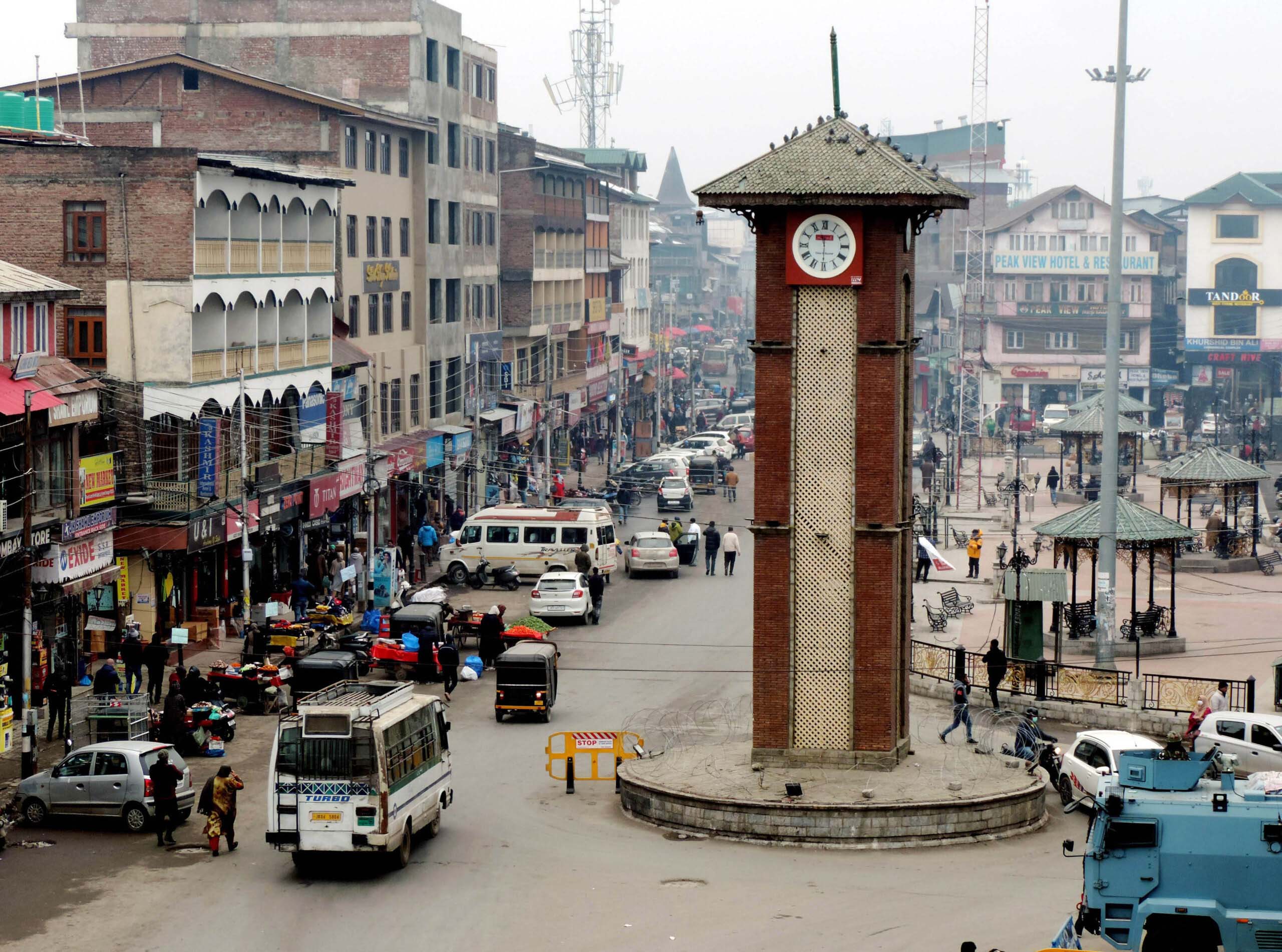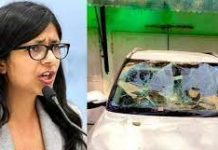
Arbitrary reorganization of the constituencies in the delimitation panel’s proposals has alarmed major J&K parties like the National Conference and the PDP, who see in the changes a design to disempower the majority community, writes Riyaz Wani
In its second set of proposals, the Delimitation Commission has proposed sweeping changes to the electoral map of Kashmir, triggering deep fears in Kashmir that a strategy was afoot to convert the demographic majority of the former state into a political minority.
The Commission which was established in 2020 to increase the number of J&K Assembly seats and redraw boundaries of electoral constituencies has already enhanced the number of Assembly seats by seven, six of which were given to Jammu and only one to Kashmir Valley. This is despite an estimated 70 lakh people living in the Valley, according to 2011 census, compared to 53 lakh in Jammu division.
Now the new proposals have sought to redraw the constituencies which are again seen as an attempt at gerrymandering to reduce the political weight of the majority community in future elections.
In the draft paper, the Commission has sought to radically change the boundaries of the constituencies in Baramulla, Kupwara, Srinagar, Kulgam and Anantnag districts of the Kashmir division.
In Kashmir Valley, the only additional seat has been carved in Kupwara district. The new seat has been named after the township of Trehgam and it includes Keran, parts of Kralpora tehsil among others.
Similarly in Baramulla district which has five Assembly segments, two seats have been renamed as Kunzer and Tangmarg constituencies and they have been carved by splitting Gulmarg and merging the Sangrama constituency. Gulmarg and Sangrama constituencies as they were named earlier have ceased to exist.
This radical splitting of constituencies has also been done in South Kashmir, a traditional stronghold of the People’s Democratic Party. For example, the Shangus tehsil has been split between Anantnag East and Larnoo constituencies. Similarly, Kokernag constituency has also been split between Larnoo and Dooru.
Kulgam, another South Kashmir district that earlier had four Assembly seats will now have only three with one of its seats Hom Shali Bugh being included in the Devsar constituency in the district.
Srinagar district will now have a separate constituency in Chanpora area. It is being created by redrawing some other constituencies of the district.
Another far-reaching change that is being proposed is the redrawing of the Anantnag constituency in South Kashmir by merging with it Rajouri and Poonch from the Jammu region.
Radical electoral makeover
Such arbitrary reorganization of the constituencies has alarmed major J&K parties like the National Conference and the PDP, both of which see in the changes a design to disempower the majority community.
The National Conference which has three members in the parliament has rejected proposals. The party said it will send a detailed response to the Commission at the earliest. The Commission has sought the views of the associate members before placing the report in the public domain.
Similarly, the PDP has termed the redrawing of the constituencies as part of the BJP’s attempt to turn Gandhi’s India into Godse’s India “The draft is a reflection of the BJP furthering its divisive agenda, separating Hindus and Muslims. They want to make it Godse’s India,” Mufti told media. “It is unacceptable. A sheer dictatorship is prevailing in the country.”

The former chief minister said that the BJP is trying to strengthen its constituencies and attempting to make voters irrelevant.
“Delimitation Commission’s proposal has not come as a surprise,” she said. “It is another onslaught on democracy in Jammu and Kashmir.”
Mehbooba also revealed that the issue of the Delimitation Commission’s draft will be discussed in the meeting of the People’s Alliance for the Gupkar Declaration on February 23.
As of yet, there has been no reaction from the separatist groups still reeling from the three-year crackdown unleashed by the government. Almost all separatist leaders are in jail. Any statements issued by them are released from Pakistan Occupied Kashmir. The government has also curbed the space for protests, including peaceful ones.
But the changing of the boundaries of the constituencies after giving six of the seven new Assembly seats to Jammu has created deep apprehensions in Kashmir including in some parts of Jammu too. People in the Valley see in the Commission’s moves a clear pattern to political disempower the majority community.
According to the 2011 census, 68.31 percent of Kashmir’s population is Muslim, while Hindus constitute 28.44 percent, Sikhs 2 percent, and Buddhists who are in the now separated Ladakh a little more than 1 percent.
But broken down into two regions – Kashmir and Jammu – a different picture emerges. Kashmir’s population of around 70 lakh is over 97 percent Muslim, with the remaining 3 percent comprising Kashmiri Pandits and Sikhs. In contrast, Jammu’s population of more than 53 lakh comprises 65 percent Hindus, 31 percent Muslims and 4 percent Sikhs.
The demographics of the majority of the Assembly constituencies in Kashmir Valley favours the majority community as all 47 constituencies are Muslim-dominated. Similarly, before delimitation, Muslims were in majority in around 17 of 37 constituencies of Jammu.
“The government of India seeks to overturn the demographic advantage of the majority community in elections by giving more seats to the minorities,” said a political analyst who didn’t want to identify himself. “Gerrymandering is already underway to ensure this outcome. The move would snatch political power from the region’s already disempowered Muslim majority”.
Two and a half years ago, New Delhi withdrew the semi-autonomous status of Kashmir, and downgraded the state into two federally administered areas – Kashmir and Ladakh. Ever since, the union government has thrown the region open to settlement by outsiders, something that was barred under the scrapped Article 370. This has set in motion a process of demographic change which, in the long run, is feared to turn the region’s majority into a minority. But pending that, people see in the delimitation of seats an attempt to accomplish artificially what a demographic change would.
“My understanding is that the J&K Delimitation Commission itself seems to be playing a game that is detrimental to the interests of the people of J&K State,” said the former union minister Saif-u-Din Soz. “I have a feeling that the J&K State’s Non-BJP mainstream, along with the National Conference, should rise to the occasion and organize a sustained and strong democratic movement against the RSS/BJP’s organized effort to change the “Electoral Profile of The State” (sic).”
A PDP politician who didn’t want to identify himself said the proposed changes are expected to alter the electoral game in the union territory. “There is a clear attempt at political engineering,” said a PDP politician. “The BJP has a multi-pronged strategy to ensure there is Hindu consolidation in Jammu in its favour. It has already benefitted from this consolidation in three successive elections since 2014 – two parliamentary and one Assembly”.
In 2015 J&K Assembly election, the party won 25 of 37 seats in Jammu, enabling it to share power with the PDP which secured 28 seats, a predominant majority of these in Kashmir Valley.
But the reduction of the gap in the Assembly seats between Kashmir and Jammu and now the redrawing of constituencies is set to redraw the political map of the union territory. The BJP which has a deep presence in Jammu could expect to have more political weight in the future J&K Assembly. And even if a Kashmir based party were to form or lead a future government, it would have little manoeuvring space to carry out its agenda or overturn the laws passed by the New Delhi backed administration over the last two years.













